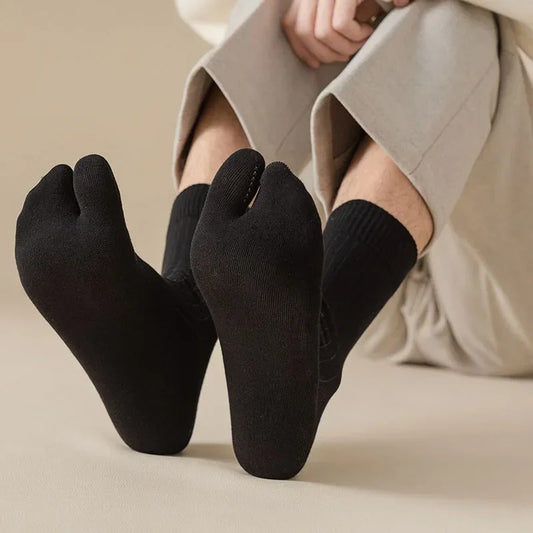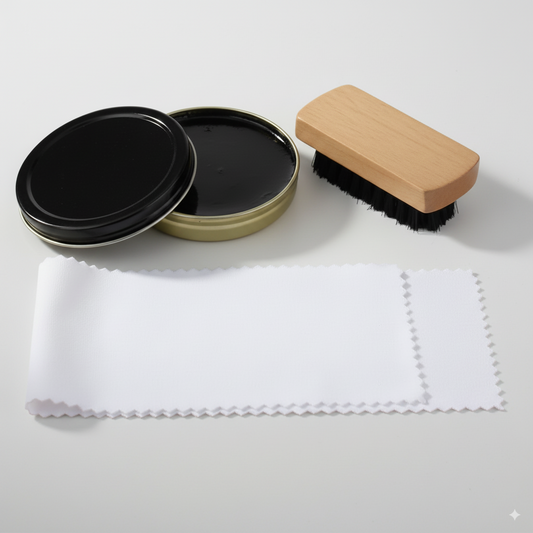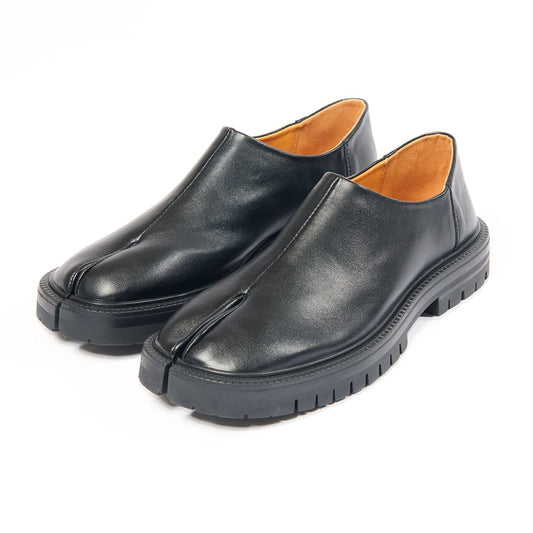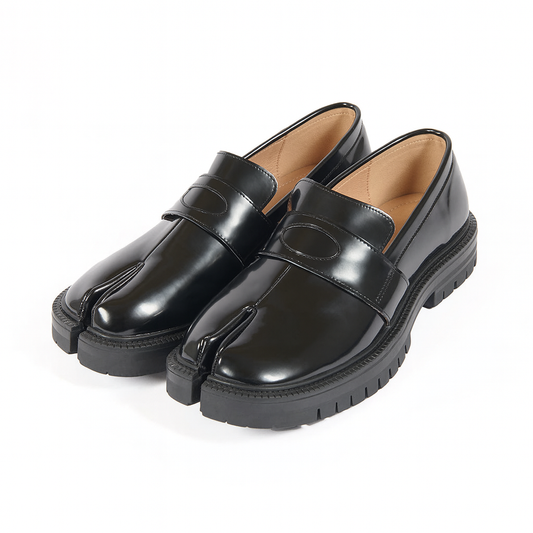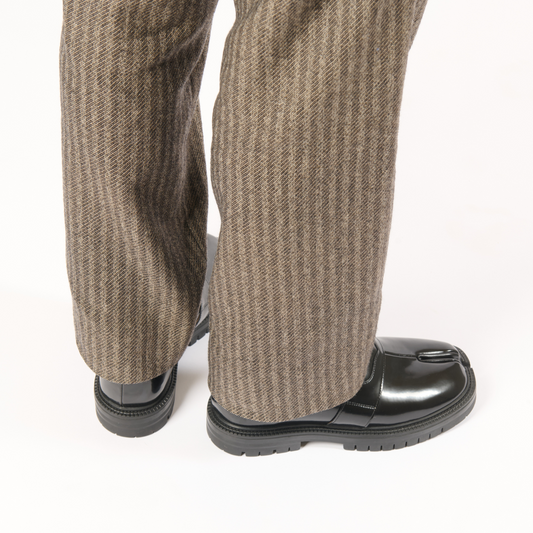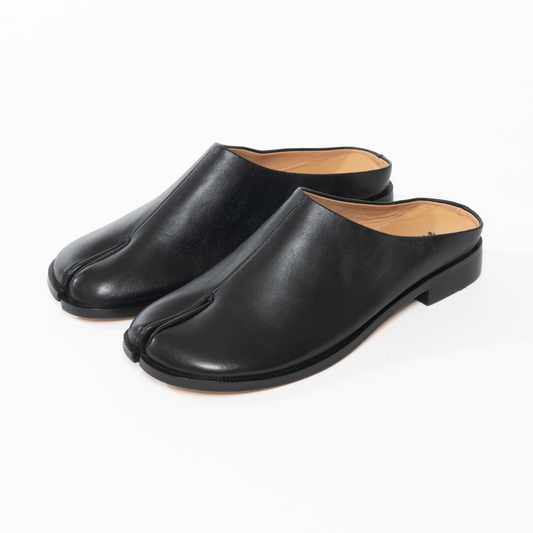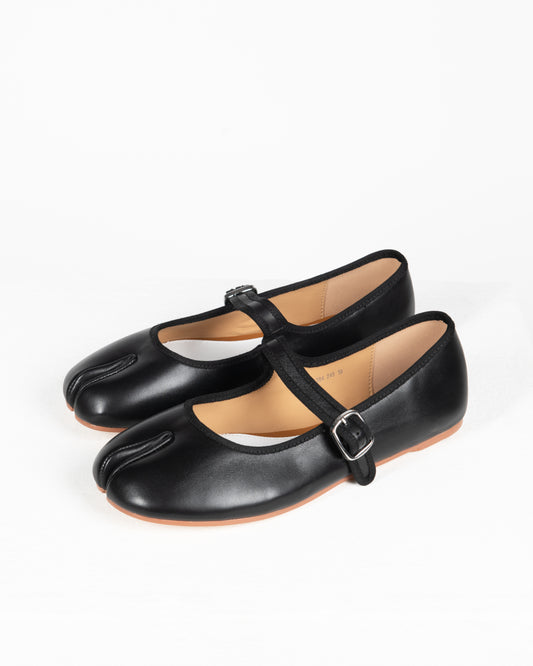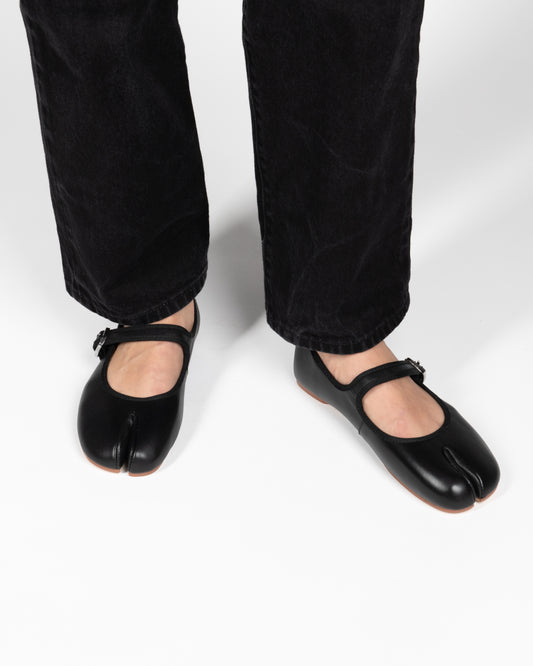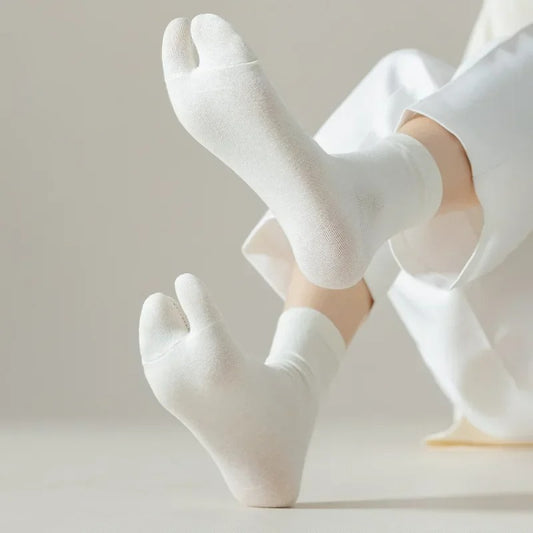What Are Tabi?
Tabi are traditional Japanese footwear, easily recognized by the split between the big toe and the other toes. More than just a clothing accessory, they are an iconic piece of Japanese culture, blending tradition, comfort, and aesthetics. Today, tabi are no longer limited to traditional uses—they have found their place in modern fashion, everyday life, and even in certain professional practices.
Origin and History of Tabi
The First Traces in Japan
The history of tabi dates back to the 12th century, a time when Japanese culture was beginning to formalize its traditional clothing. Early models were made of cotton or linen and served mainly to protect the feet indoors and during travel. These split-toe socks made it easier to wear wooden sandals while providing comfort and protection from the cold and humidity. Early tabi were often hand-sewn and worn by aristocrats and samurai before gradually becoming more widespread.
Evolution Through the Centuries
Over the centuries, tabi underwent many transformations, both in materials and in use. During the Edo period (1603–1868), they became an essential part of both men’s and women’s clothing, always paired with the kimono. Designs evolved to include different sizes, textures, and colors, with some decorated with refined patterns to indicate social rank or role. Later, with the introduction of higher-quality cotton fabrics and industrial production methods, tabi became more accessible and comfortable.
Tabi in Japanese Culture
Tabi have always played a role far greater than that of simple socks. They are present in many aspects of Japanese culture, including traditional ceremonies, classical theater such as kabuki or noh, and martial arts. In these contexts, wearing tabi is not only practical but also symbolic, reflecting respect for Japanese traditions and aesthetics. Their continued use in these fields today demonstrates how central they remain to cultural heritage.
What Are the Characteristics of Tabi?
The Split Toe
The most distinctive feature of tabi is undoubtedly the separation between the big toe and the other toes. This design is not just aesthetic—it allows for optimal support when wearing traditional Japanese sandals such as zori or geta. It also enhances stability and posture, which explains why practices like martial arts favor the use of tabi.
The Different Types of Tabi
There are several types of tabi depending on their use. Classic models, often worn with the kimono, are made of cotton and feature a side fastening with small hooks or buttons. Jika-tabi, on the other hand, resemble shoes with flexible rubber soles and are used in professions requiring mobility and safety, such as artisans or gardeners. Modern fashion has also revisited tabi, offering colorful designs with varied patterns, sometimes made with synthetic materials for comfort and durability.
Main Materials
Tabi are crafted from different materials depending on their purpose. Cotton remains the classic choice for traditional models, offering breathability and comfort. Linen is also used for its light and refreshing qualities, particularly suited to warmer seasons. Leather and rubber are favored for jika-tabi, providing durability and protection. Today, some modern tabi also integrate synthetic fibers for easier care and increased resistance to wear.
Occasions to Wear Tabi
Tabi with the Kimono
Wearing tabi with the kimono remains the most emblematic and traditional use. These socks perfectly complement the outfit for formal ceremonies such as weddings, tea ceremonies, or festivals. Their simple design and usually white color match the elegance of the kimono while respecting traditional Japanese dress codes.
Ceremonies and Traditional Arts
Tabi play an essential role in traditional ceremonies and classical Japanese theater. For kabuki actors or practitioners of certain dances and rituals, they allow for agile movement while maintaining aesthetic grace. In these contexts, tabi are not just practical—they are a symbol of respect and cultural discipline.
Martial Arts and Theater
In martial arts such as kendo, aikido, or judo, wearing tabi—especially jika-tabi in some disciplines—facilitates balance and mobility. They allow direct contact with the ground, which is essential for stances and movement. In theater, tabi complete costumes and ensure that movements remain fluid and precise.
Tabi at Work
Today, some jika-tabi models are used as practical work shoes. Artisans, farmers, or construction workers value their flexible soles and comfort, which make it easier to work long hours while maintaining good foot support. This type of tabi is both functional and durable, adapted to environments where safety and stability are essential.
Tabi for a Night Out
Modern tabi have also found their place in urban fashion and nightlife. Some brands offer colorful models with original patterns or textures, worn with sandals, loafers, or even on their own for a bold look. This adaptation to contemporary style shows the ability of tabi to reinvent themselves and integrate into daily life while staying true to their roots.
Everyday Tabi
More and more Japanese people, as well as international fashion enthusiasts, are incorporating tabi into their daily lives. Whether at home for comfort, on a casual outing, or as part of a relaxed style, these socks provide a unique alternative to standard footwear. Their distinctive design combines practicality, comfort, and aesthetics, and they are now available in a wide variety of materials and colors for all uses.
Why Do Tabi Remain Popular?
A Japanese Cultural Symbol
Tabi are not just accessories—they are a reflection of a thousand-year-old cultural heritage. Their continued presence in both daily life and ceremonies highlights the importance Japan places on its traditions, even in a modern, globalized world. Tabi have become a symbol of Japanese identity and a tangible link to the past.
A Unique Kind of Comfort
Comfort is another factor behind the popularity of tabi. The split-toe design enhances stability and offers a unique walking sensation. Natural materials like cotton and linen provide breathability and softness, making tabi pleasant to wear for long periods.
A Piece Reimagined by Fashion
Finally, tabi are experiencing a true revival thanks to contemporary fashion. Designers and international brands are inspired by their shape and style to create innovative models. Collaborations with modern footwear or colorful, original reinterpretations have helped tabi win over a wider audience while staying faithful to their Japanese essence.
Our designs blend tradition and innovation: organic cotton, flexible soles, and designs inspired by Tokyo streetwear.
